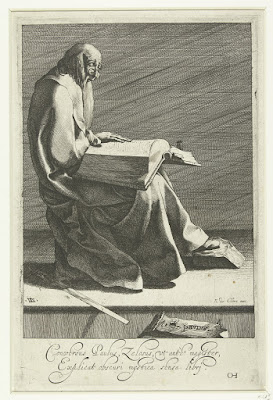 |
| Rembrandt Portrait of Jacques de Gheyn III 1632 oil on panel Dulwich Picture Gallery, London |
 |
| Jacques de Gheyn III Head of a Bearded Man ca. 1620-30 drawing Metropolitan Museum of Art, New York |
 |
| Jacques de Gheyn III Fantastic Heads 1638 etching National Gallery of Art, Washington DC |
 |
| Jacques de Gheyn III Fantastic Heads 1638 etching National Gallery of Art, Washington DC |
 |
| Jacques de Gheyn III Fantastic Heads 1638 etching National Gallery of Art, Washington DC |
 |
| Jacques de Gheyn III Fortuna offers the Cornucopia to Hercules 1617 etching Rijksmuseum, Amsterdam |
 |
| Jacques de Gheyn III The Laocoön 1619 etching Rijksmuseum, Amsterdam |
 |
| Jacques de Gheyn III Mars Sleeping ca. 1618 etching National Gallery of Art, Washington DC |
 |
| Jacques de Gheyn III Apostle Paul ca. 1616-20 etching and drypoint Rijksmuseum, Amsterdam |
 |
| Jacques de Gheyn III Apostle Peter ca. 1616-20 etching and drypoint Rijksmuseum, Amsterdam |
 |
| Jacques de Gheyn III Seven Wise Men of Ancient Greece Chilo Lacedaemonius 1616 etching Rijksmuseum, Amsterdam |
 |
| Jacques de Gheyn III Seven Wise Men of Ancient Greece Cleobulus of Lindus 1616 etching Rijksmuseum, Amsterdam |
 |
| Jacques de Gheyn III Seven Wise Men of Ancient Greece Solon Salaminius 1616 etching Rijksmuseum, Amsterdam |
 |
| Jacques de Gheyn III Seven Wise Men of Ancient Greece Thales Milesius 1616 etching Rijksmuseum, Amsterdam |
 |
| Jacques de Gheyn III Triton sounding a Conch ca. 1616-20 etching Rijksmuseum, Amsterdam |
"From an early age, Jacques de Gheyn III was destined for an artist's career. His grandfather was a successful draftsman and glass-painter, and his father, Jacques de Gheyn II, was an illustrious draftsman, engraver, and painter. As a boy, de Gheyn studied classical subjects while also receiving careful artistic training from his father, who appears to have been his only instructor. By 1616 de Gheyn had fully mastered the skills of etching and engraving. That same year, he created a series of drawings, The Wise Men of Ancient Greece, which was overwhelmingly well-received by his contemporaries. This series consisted of seven drawings of individual, seated, elderly figures, wrapped in heavy cloaks and reading the books for which they were best known. Two years later, at age twenty-two, de Gheyn and his compatriot Constantijn Huygens traveled to England, where de Gheyn arranged visits to important collections. He also made sketches in chalk or pen and ink of antique sculptures at Arundel Castle, home to the passionate collectors the earl and countess of Arundel. After his father's death in 1629, de Gheyn's artistic activity waned, leading Huygens to remark that his talent had been "choked by too much prosperity." De Gheyn spent his later years amassing a significant art collection, including works by Rembrandt, Jan Lievens, and Hans Holbein; he also served as the canon of Utrecht's Mariakerk. He died on June 5, 1644, leaving a small body of work distinctive in its variety of subjects and realism."
– biographical sketch from the Getty Museum, Los Angeles